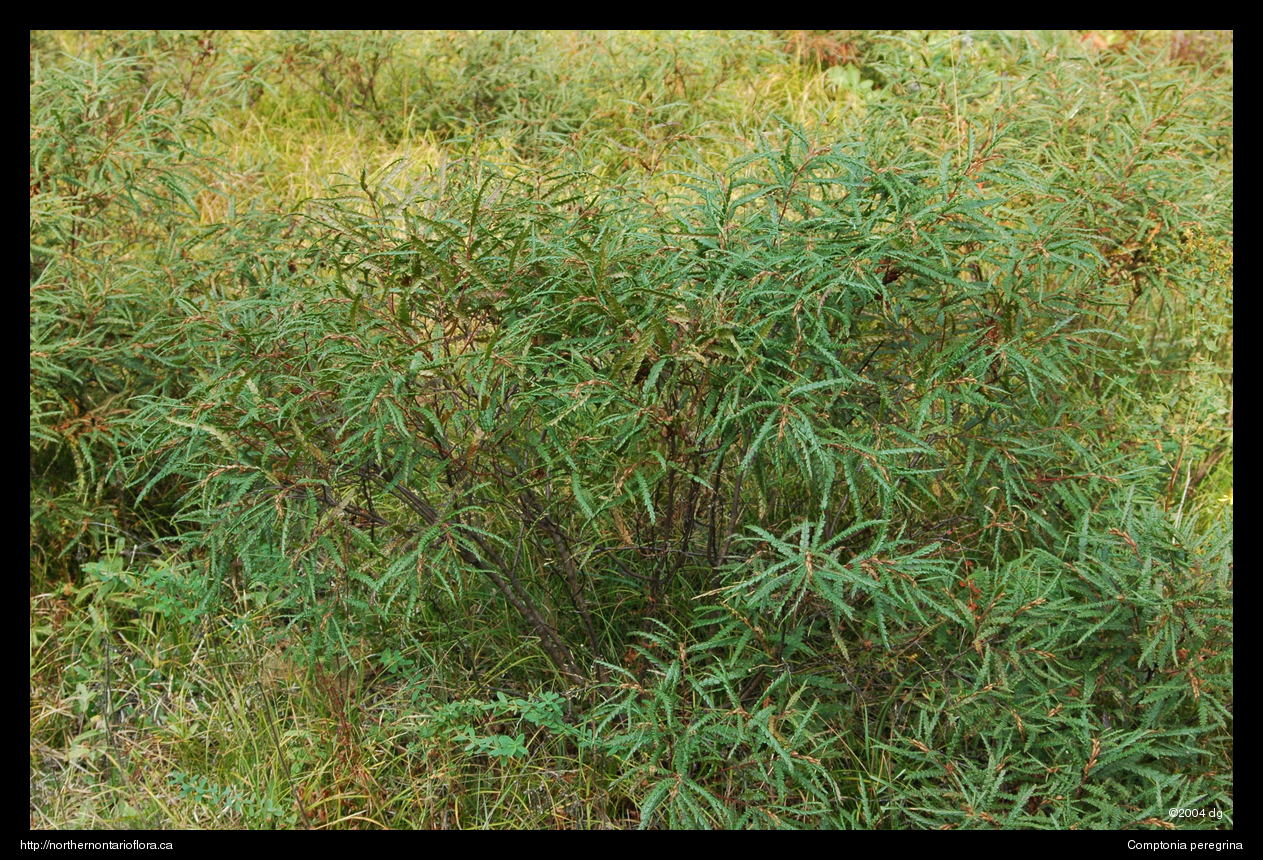
|
Northern Ontario Plant Database 
Plant DescriptionComptonia peregrina (L.) J.M.Coult.En: sweetfern, fern gale
Myricaceae (Wax-myrtle or bayberry Family) General: A low, deciduous shrub, to 1.5 m tall; very fragrant, especially when crushed; spreading by rhizomes. Bark smooth, twigs reddish- to grayish-brown, hairy. Leaves: Alternate to nearly opposite, simple, pinnately-veined, short petiolate. Leaf blade linear-lanceolate, 4–10 cm long, to 2.5 cm wide; dark green above, paler beneath and finely hairy; leaf surfaces dotted with tiny golden resin droplets; leaf base flat (truncate) to tapering (cuneate); apex pointed (acute); margins pinnately-lobed (pinnatifid); petiole to 6 mm long; stipules persistent, long-pointed (acuminate) at the tip. Flowers: Unisexual, with male and female flowers usually on different shrubs, but occasionally on the same shrub (plants usually dioecious, sometimes monoecious); flowers arranged in short catkins (aments). Male catkins cylindrical, 1–5 cm long, clustered at branch ends; female catkins to 5 mm long in flower, to 2 cm long in fruit. Flowers bloom in May. Fruit: 3–5 hard nutlets, 2.5–5 mm long, borne within a spiny, bur-like involucre, 1–2.5 cm wide. Fruits mature in late summer. Habitat and Range: Roadsides, clearings, pastures, and open woodland on dry, sandy, nutrient-poor soils. Sweetfern is native to temperate, northeastern North America. In Ontario, it has been found as far north as Cochrane and as far west as Quetico Provincial Park, and throughout southern and eastern Ontario. Sweetfern is often associated with jack pine forests (Soper & Heimburger 1982). Internet Images: This excellent image of Comptonia peregrina is from the Wisconsin State Herbarium's Vascular Plant Species Database. The Comptonia peregrina webpage from the Virginia Tech Dendrology website. Back to species list |
||||||||||||||||||||||













